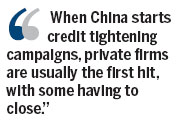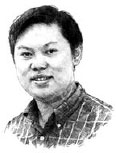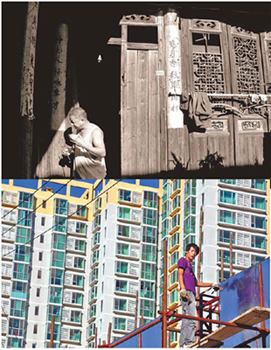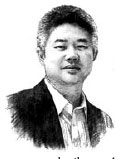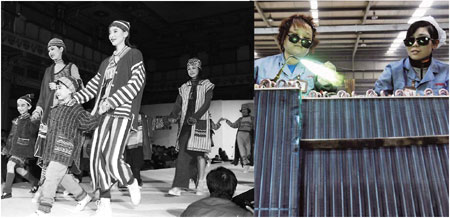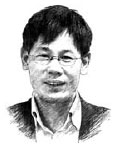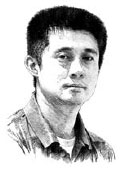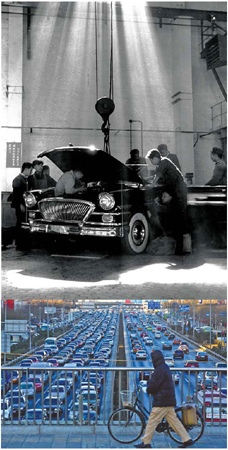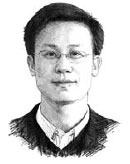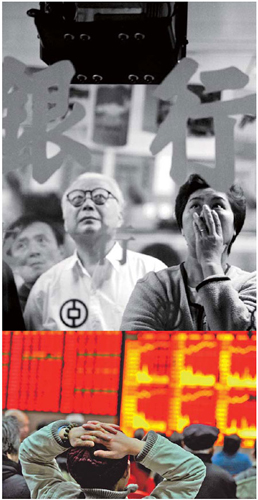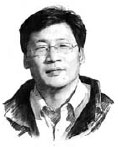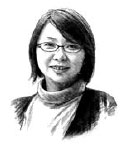|
|
|
|

Trailblazers of reform
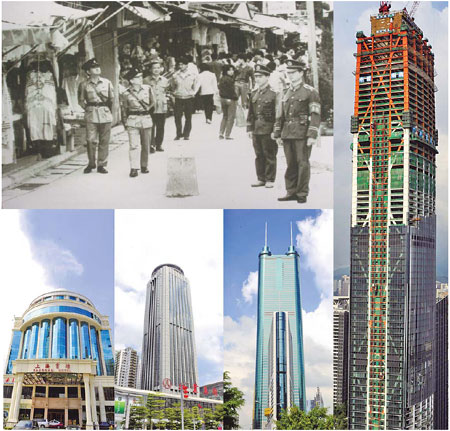 In the 1980s, when Li Zhongjian saw an expensive overseas-made cigarette lighter, he had the foresight to figure out how to make it in his home city of Wenzhou in East China's Zhejiang province. Li formed a company - something very rare in China then ?to make the lighters, initially for the domestic market. At that time, China was just starting to shake off the shackles of the old planned economy and was starting to embrace a new one that later developed into a market-oriented economy. [Full story]
|
|
|
EXPERT'S TAKE JOHN ROSS A bold vision that changed China Thirty years ago, Deng Xiaoping set out an economic vision which seemed astonishing - a 70-year policy to transform China into an advanced economy. However, the targets for its first 30 years have already been exceeded and China's economic achievements are probably the most extraordinary in world history. [Full story] |
BYLINE QU YINGPU
When I first saw China Daily in June 1981, I mistook it for a foreign newspaper. And it still puzzles me how my English teacher at a high school in the small town of Nanyang in Henan province, about 1,000 kilometers from Beijing, learned about the newspaper and had become one of its earliest subscribers. Unlike today, news and information then traveled at snail's pace. [Full story] |
|

The enterprises that reduced a government headache
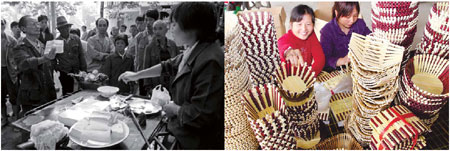 In 1983, Cao Dewang decided to lease the Gaoshan Glass Factory from his village in Fuqing, Fujian province. His aim was simple: feed his family and the families of fellow village workers, and provide them with education. With the country just recovering from the "cultural revolution" (1966-1976) and starting to allow the private economy to develop, Cao could not imagine he would one day own the factory, now called the Fuyao Group, which supplies windows to luxury car brands such as Bentley and Audi, and employs more than 15,000 people. Over the past three decades, entrepreneurs such as Cao, together with foreign investors, have become the main source for jobs as urbanization advanced quickly. "The private economy creates jobs as well as empowers workers to become rich. If China wants to become an affluent society and make its people rich, the private economy is a crucial force," says Huang Mengfu, chairman of the All-China Federation of Industry and Commerce, which represents more than 2 million private enterprises and owners. In 1979, there were just 107,800 private enterprises, employing 1.84 million people. About 22.58 million people were self-employed. In 2010, the number of private enterprises rose to 8.4 million, about three quarters of all enterprises in China, while the number of self-employed businesses increased to 34 million. In total, more than 180 million people were employed by the private economy last year, growing by 55 percent in five years. Liang Hongfei, an associate professor at the School of Governance with Peking University, says more than half of those under the age of 30 in cities work in private companies. [Full story]
|
|
|
EXPERT'S TAKE DONG XIAN'AN Largest employer needs a level playing field
China's broad private sector provides more than 90 percent of the 800 million jobs in the world's second-largest economy. That includes 237 million created by domestic private firms in urban areas, 18 million created by foreign-invested firms and 470 million rural jobs. [Full story] |
BYLINE ZHU QIWEN
Resilient growth engine crucial to prosperity The remarkable growth of China's private economy over the past three decades has been crucial to making the Chinese economy the world's second largest. More importantly, however, policymakers should better tap into the huge potential of the private sector to help the country transform its investment and export dependent economy into a consumption-driven one. [Full story] |
|

Going through the roof Wang Yang, a 46-year-old college teacher, clearly remembers the time he lived in a small apartment in the university. Similar to the college dormitories of today, there was usually only one shared kitchen and a toilet on the same floor. "I lived in a room with a floor space of some 8 square meters. My neighbors were all my peers from the university," Wang says. "At lunch time, the kitchen would bustle with excitement. We tasted dishes with different flavors." Such buildings, mostly built in the 1950s and 1960s, aimed to address the housing needs of staff. China adopted a welfare housing system where the State enterprises built houses for the use of employees. "We never thought about owning an apartment. The enterprises would allocate a room for us according to our age, work experience and title," Wang says. Shen Jun, a 38-year-old employee at a State-owned enterprise based in Beijing, thought he'd follow Wang's footsteps. But he failed to get company accommodation. [Full story]
|
|
|
EXPERT'S TAKE JOHN WONG Overseas investors get more aggressive The period between 2001 and 2010, amid China's continuously expanding economy with the GDP compounded annual growth rate (CAGR) reaching 15.4 percent, has attracted rising foreign direct investment (FDI). Over the past 10 years, China's FDI CAGR averaged 9.5 percent. Coupled with the continued appreciation of the Chinese currency against the US dollar, these have boosted the interest of overseas investors in China, especially in real estate. [Full story] |
BYLINE SUN SHANGWU
Keeping the dream alive in my 'little white house' For many young college graduates before the 1990s, tongzilou was an important word in their vocabulary. It referred to the low-rise apartment buildings with long central corridors, communal toilets and cooking facilities at one end. Various working units - government departments or State-owned companies - assigned a small room to their newly employed staff in such buildings for accommodation. They lived in tongzilou for years due to the serious housing shortage then. [Full story] |
|
 Evolving export strategy
In July 1978, Hong Kong businessman Zhang Zimi approached the Dongguan government, in South China's Guangdong province, with a radical idea: to start making handbags for the Hong Kong market. Zhang's deal called for him to inject HK$2 million and provide the designs and raw materials. All the Dongguan government had to do was to provide the factory and the workers. "We became interested in the proposal when Zhang came to visit us and made a handbag there and then, based on the sample he brought with him," says Tang Zhiping, an official from the Dongguan government who was part of the team that looked at Zhang's plan. Shortly after that meeting, the deal was signed and the Taiping Handbag Factory was born. What made this deal radical was that up until then, China exported mainly agricultural and subsidiary products, and primary goods such as bristles, Chinese wood oil, silk and tea. [Full story] |
|
|
EXPERT'S TAKE SUN ZHENYU Joining WTO was a positive move It's been 10 years since China joined the WTO, a landmark event in the process of China's opening-up to the outside world. Despite great concerns both in China and in other member states about the challenges China would face and those it might bring to other members, the worst-case scenario did not happen. On the contrary, China's membership has proved to be positive both for the country and for the rest of the world. [Full story] |
BYLINE XIE SONGXIN
Canton Fair barometer of exports If you want to learn how China's export engine works, check out the Canton Fair. Since 1957, the China Export Commodities Fair, as it was called before 2007, has been the most significant biannual shopping event, held every spring and autumn, for foreign businesses importing from the country, and the barometer of Chinese export performance. [Full story] |
|

Shopping changes from chore to choice
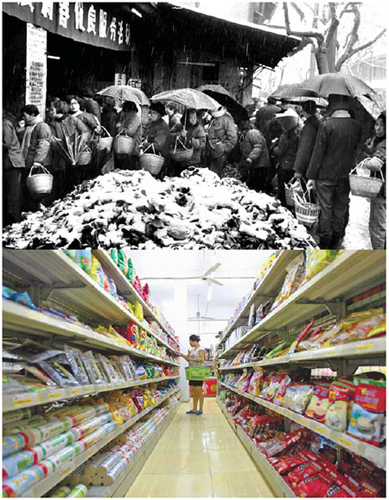 Zhou Qiyuan does not like shopping. His distaste for shopping spans many years. "There was nothing to shop for in the late 1970s and early 1980s," says the 65-year-old Beijing resident. "It was all about getting coupons, standing in long queues, choosing from the few goods that were available and, more often than not, being bullied by salespersons." Almost everyone shared Zhou's experience three decades ago, when China imposed a strict ration system. Shopping in those days was all about food coupons or, for the luckier ones, foreign exchange certificates. "Cash did not make sense," says Zhou, an ace tennis player for the People's Liberation Army in the 1970s. "And even if you had coupons, you couldn't buy much for supply was limited - rice, noodles, seasonal vegetables, pork, eggs and sometimes milk. That's all ..." But those were also the years when China's free market started taking shape with shops and wet markets, most of them run by the State, in cities across the country. The retail sector started growing in the 1980s, and almost every town had one or two State-owned department stores, says Cindy Chung, an analyst with the Shanghai-based Universal Consultancy. [Full story]
|
|
|
EXPERT'S TAKE JAMES A.C. SINCLAIR From a seller's to a buyer's market Looking back on 30 years of retailing, it is difficult to fathom that China would emerge as the face of a global retail revolution. It was a time when China was just shaking off the shackles of a planned economy and the retail sector was strictly regulated. In other words, it was a different time and a different era. [Full story] |
BYLINE GAO ANMING
Miracle is product of pragmatism, hard work Zhuozhou is a small city 60 kilometers southwest of Beijing. I learned about the town not because it was home to emperors, or their tombs, but due to a farmer who knocked on my door when I was about 9. [Full story] |
|

Foot off the brake Among China's first drivers were newspaper photographers, who took advantage of the faster form of transport to follow fire trucks and zoom to action hot spots. Veteran China Daily photographer Wu Zhiyi and former China Daily employee Chen Xiong can remember Beijing in the 1980s when driving a car in the capital was a sheer delight. There were sunny blue skies, very few cars and no traffic jams. During the mid-to-late 1980s, when Wu and Chen first took to the road, private car ownership was finally allowed. Today, the domestic motoring industry has grown to become the biggest in the world. But driving is still a relatively new concept in China and the car-buying boom has really occurred only during the past decade. In 2001, 2.3 million vehicles were produced in China and each year the volume increased between 1 and 1.5 million vehicles. But by 2008, when annual production reached 9.3 million, the nation went car crazy and by 2009 the number rose to 13.8 million. In 2010, more than 18 million automobiles were produced in China. This year, tens of millions of new Chinese car owners are exploring their nation, on a fast-growing 75,000 km freeway network (half was built in the past five years), but most motorists have limited experience. [Full story]
|
|
|
EXPERT'S TAKE ASHLEY SUTCLIFFE The Cherokees that sparked revolution During the 1980s, one of the major seeds of change sprouting from China's new market economy was the all-new motoring industry. In 1984, the now defunct American Motors Corporation (AMC) signed a partnership with Beijing Auto Works, the nation's first motor company joint venture, to produce the Jeep Cherokee in China; Daihatsu started strong but soon lost market share; Volkswagen made the iconic Santana, and Mercedes-Benz came onto the scene. [Full story] |
BYLINE GONG ZHENGZHENG
I have a secret to tell you When I was asked to write this column, I felt a little embarrassed. The main reason is that as a senior correspondent and editor covering the auto industry over 12 years at China Daily, I'm still not a car owner, although I got a driving license eight years ago. For this, I'm always ridiculed by many colleagues. [Full story] |
|

A 20-year rollercoaster ride Jiang Zhikang's foray into China's fledgling stock market in the early 1990s was not only risky but required great patience. "I lined up at the small trading counter for a whole night in order to buy the stock subscription certificates,?Jiang, 62, says. "I thought that owning stocks may be better than just putting my money in a bank account.? Jiang, who then worked for an oil company in Shanghai, says everyone had to take part in a lottery to buy a stock. "I was lucky that I managed to get a total of 1,200 shares in a textile company at a price of 50 yuan a share." Jiang, who was earning about 1,000 yuan a month then, spent almost his entire life savings to buy the shares. It did not take long for the stock price to double and Jiang sold all of his stocks at about 200 yuan a share, pocketing a handsome profit. The stock Jiang bought in 1992 is now trading at about only 6 yuan a share and the company faces the risk of delisting because it has been operating at a loss for years. Like Jiang, the early stock investors in China were those with an adventurous spirit and who were willing to take risks. In 1984, China saw the birth of its first stock with Shanghai Feilo Acoustics Co Ltd, an electronic equipment manufacturer, issuing 10,000 shares. For years, there were only a dozen stocks publicly trading in the market, with far more buyers than sellers. [Full story] |
|
|
EXPERT'S TAKE CAO FENGQI Investor protection vital for market to move forward It has been 20 years since the birth of China's stock market, which has experienced wild ups and downs. Looking back, I think we should reflect on what kind of market it has developed into, what role it has played in China's economy and what we should do next. [Full story] |
BYLINE REN KAN
Time to fasten your seat belts It may be disappointing that I'm not going to talk in this column about whether it's time to buy into China's stock market when the market looks cheap after a recent derating. I have to admit that, despite being one of the first journalists who began reporting on China's financial and stock markets more than two decades ago - when the Chinese stock market was set up - I have never bought a single share. [Full story] |
|
 On track for high speed
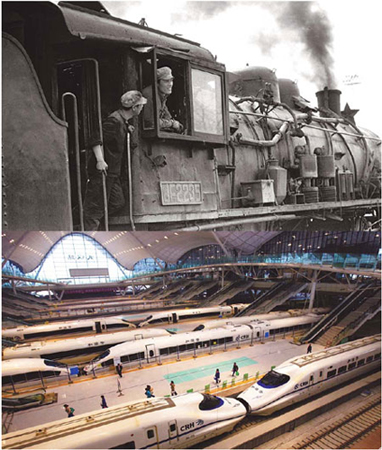 Board any of China's high-speed trains and you'll step into a clean and comfortable cabin worthy of airlines. More important, the trains will whisk you to your destination almost as quickly as propeller-driven aircraft. These trains cover the 1,069-km journey between Guangzhou and Wuhan in about three hours, while the 120-km trip between Beijing and Tianjin is done in half an hour. But it wasn't always so. Just two years ago, the Guangzhou-Wuhan train trip would take more than 10 hours, while you would have been hard-pressed to get to Tianjin from Beijing in less than two hours before 2008. [Full story] |
|
|
EXPERT'S TAKE ZHAO JIAN Passenger turnover trails off the rails The length of China's railway network soared from 49,900 km in 1980 to 91,000 km by the end of 2010, making it the world's second longest. Its passenger and cargo transport facilities have also ranked among the top. Despite the railway's growth, its role in the nation's economic development is trailing off compared to other transport means. [Full story]
|
BYLINE XIN DINGDING
It's not just the speed of the trains My first trip to Beijing was to work at China Daily, and it started with a bus. My hometown, Nantong city in eastern Jiangsu province, had no rail connection. So, on a hot August morning in 1999, my father and I dragged a few bags and got on to a bus to Nanjing, the provincial capital. After nearly five hours, we boarded an air-conditioned train from Nanjing to Beijing. [Full story] |


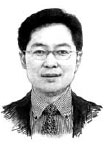 Growing pains ... and gains
Growing pains ... and gains 
